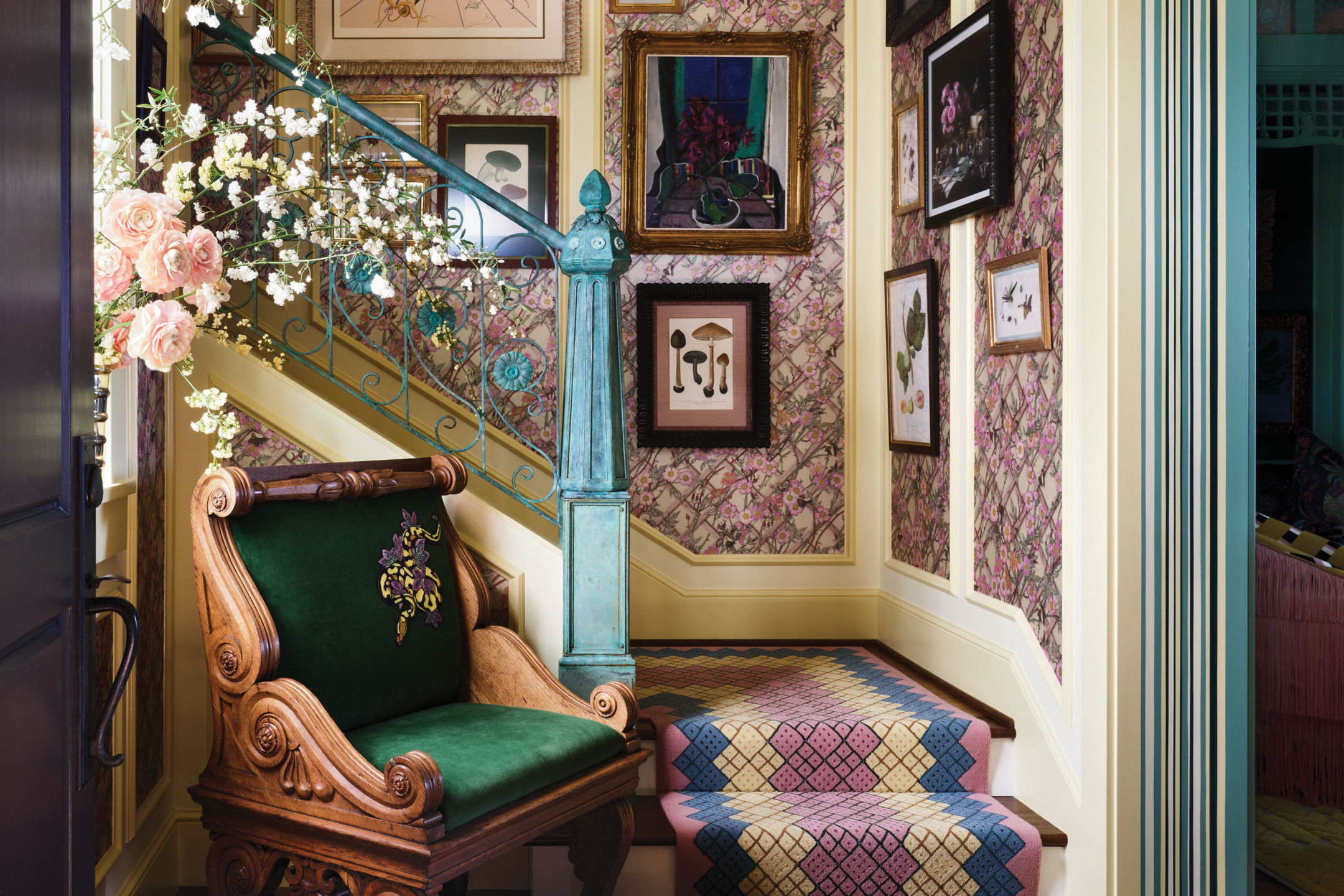The Essential Guide to Hanging Artwork
From eclectic vignettes to gridded groupings, art walls balance personality with precision

Whether gracing the gilded salons of 18th-century Europe, lining the bohemian lofts of the 1970s, or animating an urban penthouse today, gallery walls command attention as creative expressions of a homeowner’s unique personality. They needn’t mimic The Met’s stately galleries, either—the power of an effective art wall lies in authentic arrangements that feel unforced and alive.
That’s precisely the spirit Ken Fulk summoned for a whimsical weekend home nestled in the rolling hills outside Carmel, California, where a spellbinding art wall transforms the stairwell into an enchanted fantasia. The vivid tableau blends antique botanical prints, midcentury floral oils, and Surrealist still lifes into a single visual ecosystem rooted in the home’s windswept locale.
Fulk’s in-house advisory worked with the clients to source pieces that speak to their shared affinity for the outdoors, complementing nature-inspired design flourishes: a verdigris newel post crowned with sculpted blooms, a runner echoing the wallpaper’s trellis motif, and a hand-embroidered vintage chair.
“This whole house is about transportive moments,” he muses—a reminder that the most impactful art walls set the tone for how you experience a home.

Power Grid
Structured, linear arrangements can be just as compelling as an organic, freestyle hang. That principle guided designer Jamie Bush while renovating a midcentury Houston home where he arrayed a grid of 45 woodcuts by Danish Israeli artist Tal R on a wall framed by floor-to-ceiling windows in the study. The intervention created an unexpectedly dynamic focal point that amplifies the rationalist architecture and enhances the room’s adventurous textural mix, extending from an ebonized-oak desk to a Moroccan rug with shaggy goatskin poufs. Each woodcut began as a vintage breadboard into which Tal R carved sprightly silhouettes of varying shapes and symbols that he later printed. “It creates this incredible rhythm,” says Bush, who discovered the collection with his clients while walking Art Basel Miami Beach. Wasting no time, he remotely mapped out the wall at the fair to formulate how the set could fit. He extends that advice to anyone considering a multipiece buy and recommends always getting involved with a client’s collection from the start. “Art can make or break a space,” he says, noting how the organized display doubles as an architectural device. “It makes the room feel taller because it brings your eye all the way up to the ceiling.”

True Colors
Designers must often find cohesion among existing collections. For a penthouse living room in Madrid’s Barrio Salamanca, designer Marta de la Rica orchestrated a chromatic art wall that harmonizes eras, techniques, and scales. Her client longed for a vibrant yet meditative aerie. As the centerpiece, the designer devised a corner lounge whose exuberant art wall pairs contemporary works with historical engravings, Surrealist animal drawings in antique frames, and a photograph of the homeowner as a young girl.
Sourced primarily from local dealer Galería Marita Segovia, the collection was arranged with an eye toward rhythm and balance. Color provided a subtle through line, linking certain artworks to vintage furniture and a wall-mounted bookshelf where flamboyant spines forge their own composition. De la Rica rebuffs “matchy-matchy” approaches to color, though. “Don’t be overly worried about what you’re hanging,” she advises. “Going with the flow helps with the end result.” That outcome makes a strong case that soul—not rigid rules or blue-chip acquisitions—yields gallery walls that truly resonate.
A version of this article first appeared in print in our 2025 Late Fall Issue under the headline “Picture Perfect.” Subscribe to the magazine.























